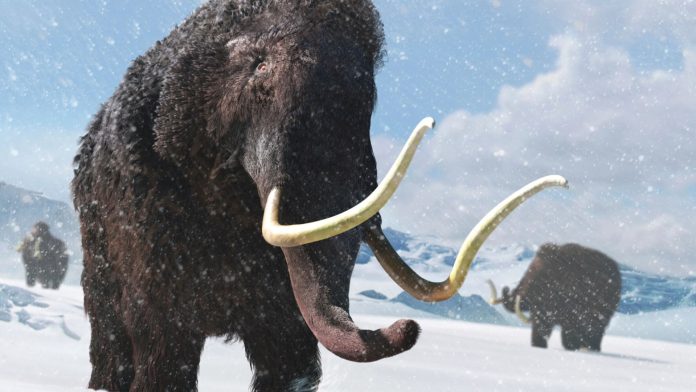Could Allergies Have Driven Woolly Mammoths to Extinction? Shocking New Theory Uncovered!
Could something as common as allergies play a role in the extinction of one of history’s most iconic creatures? Recent scientific discoveries suggest that woolly mammoths, those massive, furry giants, may have faced a peculiar challenge that impacted their survival—their own allergies! This fresh perspective offers fascinating insights into how a condition associated with humans could have contributed to the mammoth’s demise.
The Discovery: Allergies Found in Woolly Mammoths
In a groundbreaking study, researchers have unveiled evidence indicating that woolly mammoths suffered from allergies, likely due to pollens from plants around them. This discovery adds a new layer to the long-held beliefs about why these majestic creatures disappeared nearly 4,000 years ago. The findings highlight how these allergies might have impeded the mammoths’ ability to reproduce. Imagine being a massive mammoth, proud and strong, but struggling to find a mate due to an allergy that muddles your sense of smell! It’s mind-boggling.
Linking Allergies to Reproductive Issues in Mammoths
Imagine the bustling icy landscapes where woolly mammoths roamed. With the onset of the last ice age’s end, the environment shifted dramatically. As this change occurred, mammoths potentially became victims of their own biology. The mere act of mating hinged on their ability to locate suitable partners in these transforming habitats. The allergies could have severely hampered this essential skill.
Researchers have identified immunoglobulins, antibodies produced by the immune system, within preserved mammoth remains, indicating allergic responses to pollen. In studying four mammoth specimens unearthed from Siberia’s permafrost, scientists discovered traces of highly allergenic plants and their pollen. This link paints a vivid portrait of how environmental changes and biological reactions may have intertwined to create a perfect storm leading to extinction.
Could Climate Change Have Aggravated the Situation?
The extinction narrative often emphasizes climate change, and rightly so. About 10,000 years ago, as weather patterns evolved rapidly and ice began to melt, the world shifted from frigid tundras to lush vegetation. While this may sound ideal, it created a new set of challenges. As plant life flourished, so did pollen—from grass to trees—leading to worsening allergies for the woolly mammoth population.
The new study, noted for proposing an alternative theory, suggests that these allergies directly impacted mating behaviors. The dramatic shift in habitat may have diminished the availability of compatible mates, ultimately influencing the reproductive success of these giants.
How Allergies Might Have Led to Population Decline
According to Gleb Zilberstein, the study’s lead author, the newfound evidence reveals that the allergies present in woolly mammoths interfered with their natural communication, primarily through scent. Being unable to recognize each other’s scent due to allergy-induced scent blindness could mean missing countless opportunities for mating. This missing link in the extinction story emphasizes the evolution of the mammoth’s immediate environment and biology.
Zilberstein articulates, “We have introduced a new hypothesis: that allergies to plant pollen developed during the breeding season impacted their ability to find one another to reproduce.” It’s a powerful reminder that sometimes, the tiniest changes can have the most significant impacts.
The Evolutionary Mechanism Behind Mammoth Extinction
This new evolutionary insight posits that the extinction of woolly mammoths wasn’t abruptly spurred by one catastrophic event but was a gradual process of declining birth rates and dwindling populations. As environmental pressures mounted, the mammoths could have faced a devastating decline in reproductive success because of these allergens.
Given that mammals rely heavily on chemical signals for attraction and mating, allergies might have muted those vital chemical cues, isolating individuals from potential mates. Essentially, the very essence of attraction became obscured by allergic reactions.
Potential Future Research and Implications
So, what does this mean for future studies? As researchers delve deeper into mammoth genetics, paleobiology, and habitat changes, there is a potential for increased understanding of how present-day wildlife might face similar challenges. With climate change affecting modern ecosystems, the plight of various species could echo the struggles faced by woolly mammoths.
As we marvel at these ancient behemoths, the lingering question remains—are there lessons from their extinction that can guide us in safeguarding today’s wildlife? Could understanding the relationship between allergies and reproductive health be crucial for managing conservation efforts?
Conclusion: The Enigmatic Extinction of Woolly Mammoths
In summary, the extinction of woolly mammoths may not be simply chalked up to climate change or overhunting. The addendum of allergies offers a riveting angle to explore. These furry giants, well-adapted to their icy homes, may have succumbed to a slow decrease in reproductive success, a fate encapsulated in the deadly haze of plant pollen. As researchers continue to unravel the mysteries surrounding these magnificent creatures, we find ourselves contemplating the intricate interconnectedness of life, environment, and survival.
So, the next time you think about the woolly mammoths, remember this: even the mightiest of beasts can be brought down by something as unassuming as an allergy. Isn’t nature endlessly fascinating?

